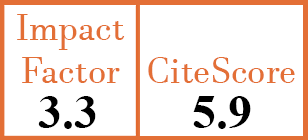Clinical aspects
Insulin resistance is associated with digital ulcer in patients with systemic sclerosis
E.-K. Park1, S.-G. Lee2, B.-H. Kim3, J.-H. Park4, S. Lee5, G.-T. Kim6
- Divsion of Rheumatology, Department of Internal Medicine, Pusan National University School of Medicine, Pusan National University Hospital, Busan, South Korea.
- Division of Rheumatology, Department of Internal Medicine, Pusan National University School of Medicine, Pusan National University Hospital, Busan, South Korea. sglee@pusan.ac.kr
- Divsion of Endocrinology and Metabolism, Department of Internal Medicine, Pusan National University School of Medicine, Pusan National University Hospital, Busan, South Korea.
- Divsion of Rheumatology, Department of Internal Medicine, Pusan National University School of Medicine, Pusan National University Hospital, Busan, South Korea.
- Department of Internal Medicine, Pusan National University School of Medicine, Medical Research Institute, Pusan National University Hospital, Busan, South Korea.
- Division of Rheumatology, Department of Internal Medicine, Kosin University College of Medicine, Busan, South Korea.
CER9305
2016 Vol.34, N°5 ,Suppl.100
PI 0085, PF 0091
Clinical aspects
Free to view
(click on article PDF icon to read the article)
PMID: 27383539 [PubMed]
Received: 30/01/2016
Accepted : 16/05/2016
In Press: 23/06/2016
Published: 14/10/2016
Abstract
OBJECTIVES:
To investigate the relationship between insulin resistance and digital ulcers (DUs) in patients with systemic sclerosis (SSc).
METHODS:
Using a cross-sectional design, we recruited 73 consecutive female patients with SSc and 109 sex- and age-matched healthy controls in South Korea from July 2014 to June 2015. The magnitude of insulin resistance was measured using the homeostatic model assessment of insulin resistance (HOMA-IR). DUs ever included active and healed DUs and the extent of skin fibrosis was evaluated using the modified Rodnan skin score (MRSS).
RESULTS:
The HOMA-IR in patients with SSc was significantly higher than that in healthy controls (median 1.18 vs. 0.71, p<0.001). In SSc patients, 7 (9.6%) had active DUs and 14 subjects (19.2%) had healed DUs; thus, DUs ever were observed in 21 cases (28.8%). SSc patients with DUs ever had significantly higher HOMA-IR and MRSS compared with those without this feature (median, 2.05 vs. 0.99, p=0.001 and 14 vs. 9.5, p=0.011, respectively). After adjustment for confounding factors using multivariable logistic regression analyses, the HOMA-IR showed a significant positive association with the presence of DUs ever in patients with SSc (OR=1.43, 95% CI=1.01-2.05, p=0.048). In addition, higher MRSS was significantly correlated with DUs ever (OR=1.11, 95% CI=1.02-1.21, p=0.015).
CONCLUSIONS:
Insulin resistance was independently associated with the presence of DUs in patients with SSc and may be a potential biomarker for SSc micro-vasculopathy. Moreover, our data also suggest a potential contribution of insulin resistance to the pathogenesis of DUs.


